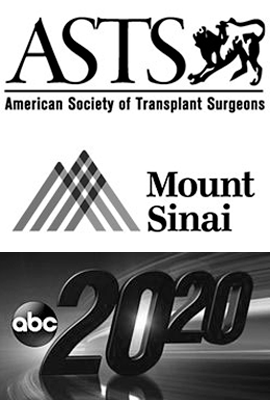Understanding Abdominal Aortic Aneurysms: Risks, Symptoms and Treatment Options

Abdominal aortic aneurysms (AAA) pose a significant threat to vascular health, yet they often go unnoticed until a potentially life-threatening complication occurs. As a leading vascular surgeon, Dr. Alan Benvenisty, MD, specializes in the diagnosis and treatment of AAA, helping patients understand the risks, recognize symptoms and explore effective treatment options.
What Are Abdominal Aortic Aneurysms?
Abdominal aortic aneurysms (AAA) occur when a weakened area of the abdominal aorta—a major blood vessel that supplies oxygenated blood to the lower body—becomes enlarged and bulges outward like a balloon. This condition is often asymptomatic in its early stages, making it difficult to detect without proper screening. However, as the aneurysm grows larger, it can put pressure on surrounding organs and tissues, increasing the risk of rupture, a potentially life-threatening emergency.
Recognizing Symptoms and Risk Factors
While many abdominal aortic aneurysms remain asymptomatic until they rupture, some patients may experience warning signs such as abdominal or back pain, pulsating sensations in the abdomen, or a persistent feeling of fullness or discomfort. Certain risk factors, such as age, gender, smoking, high blood pressure and family history of AAA, can increase the likelihood of developing an aneurysm. Recognizing these risk factors and being vigilant about symptoms is crucial for early detection and intervention.
Treatment Options Available with Dr. Alan Benvenisty
When it comes to treating abdominal aortic aneurysms, timely intervention is essential to prevent rupture and its potentially catastrophic consequences. Dr. Alan Benvenisty, MD, offers a comprehensive range of treatment options tailored to each patient’s unique needs and circumstances. These options may include:
- Endovascular Aneurysm Repair (EVAR): EVAR is a minimally invasive procedure that involves inserting a stent graft through small incisions in the groin and guiding it to the site of the aneurysm using imaging techniques. The stent graft reinforces the weakened portion of the aorta, preventing further expansion and reducing the risk of rupture. EVAR offers shorter recovery times and fewer complications compared to traditional open surgery, making it an attractive option for many patients.
- Open Surgical Repair: In cases where EVAR is not feasible or appropriate, open surgical repair may be recommended. This procedure involves making an incision in the abdomen to access the aneurysm directly and replace it with a synthetic graft. While open surgery is more invasive and requires a longer recovery period, it may be necessary for patients with complex anatomical features or large aneurysms that cannot be treated endovascularly.
Dr. Alan Benvenisty, MD, brings years of expertise and a compassionate approach to the treatment of abdominal aortic aneurysms. Through personalized care and state-of-the-art techniques, he helps patients navigate the challenges of AAA with confidence and peace of mind. Whether through minimally invasive EVAR or traditional open surgery, Dr. Benvenisty prioritizes patient safety and optimal outcomes, ensuring that every individual receives the highest standard of care for this potentially life-threatening condition.
Abdominal aortic aneurysms represent a serious vascular health concern that requires prompt diagnosis and intervention. With Dr. Alan Benvenisty’s expertise and dedication to patient-centered care, individuals facing AAA can access advanced treatment options and personalized support to safeguard their health and well-being. Do not wait until it is too late—schedule a consultation with Dr. Benvenisty today at his office in NYC and take proactive steps towards protecting your vascular health.
Posted on behalf of
440 West 114th St, Second Floor
New York, NY 10025
Phone: (212) 523-4706
Monday & Friday 9:00 AM – 5:00 PM







